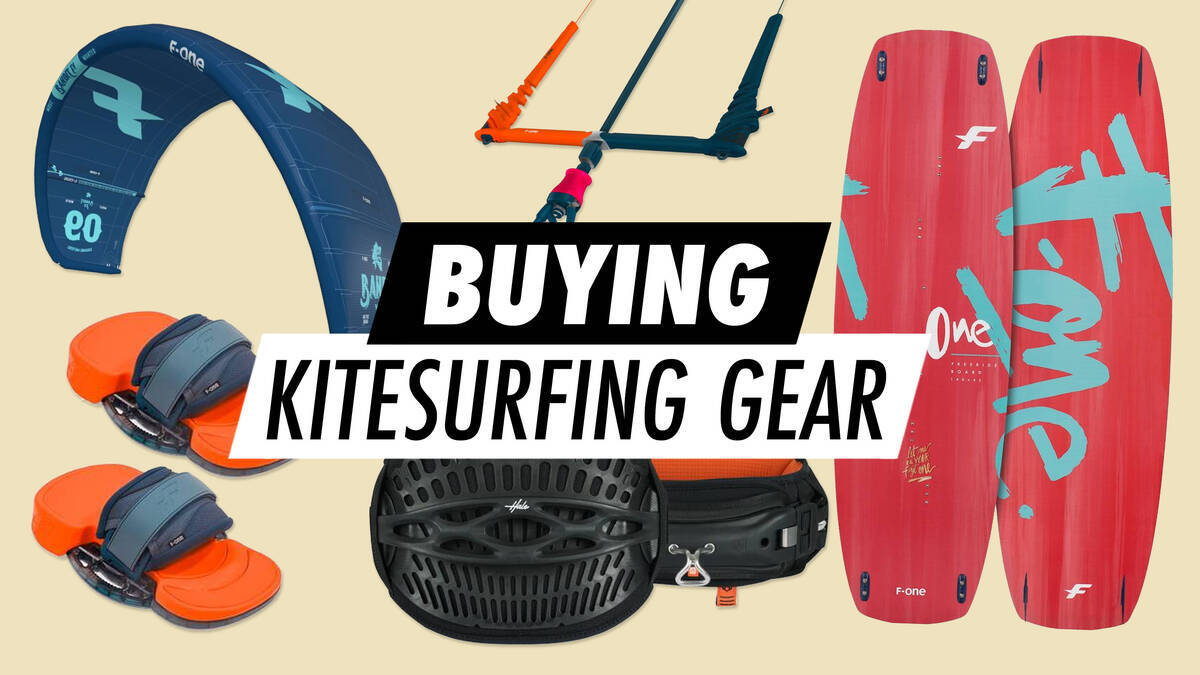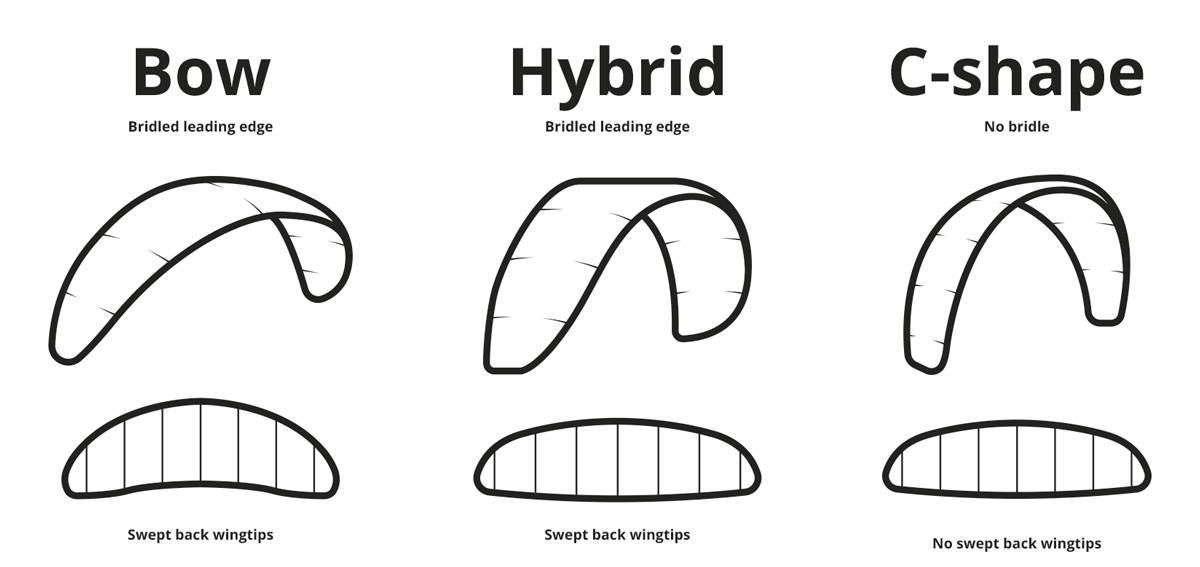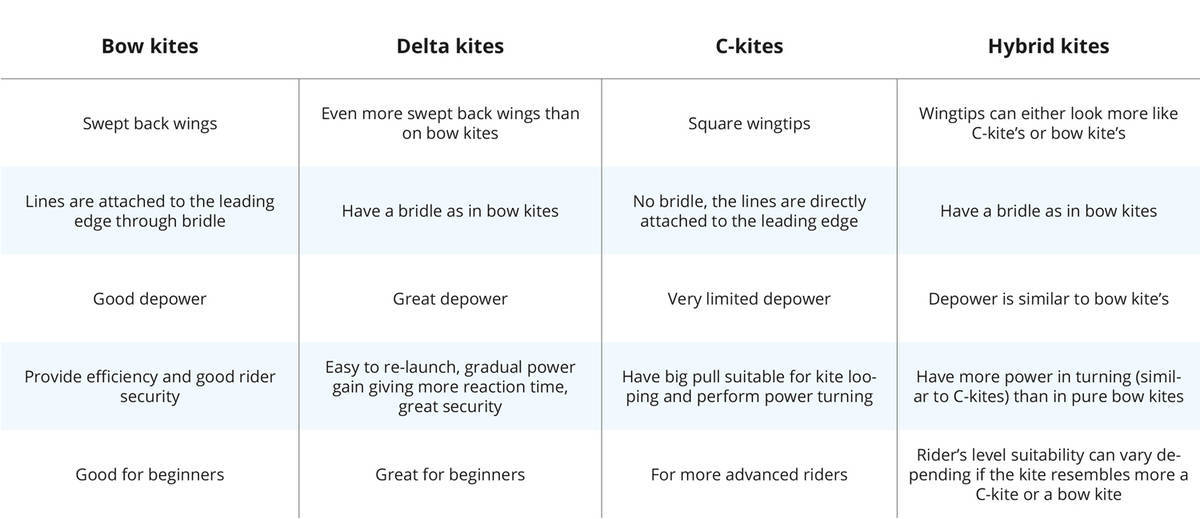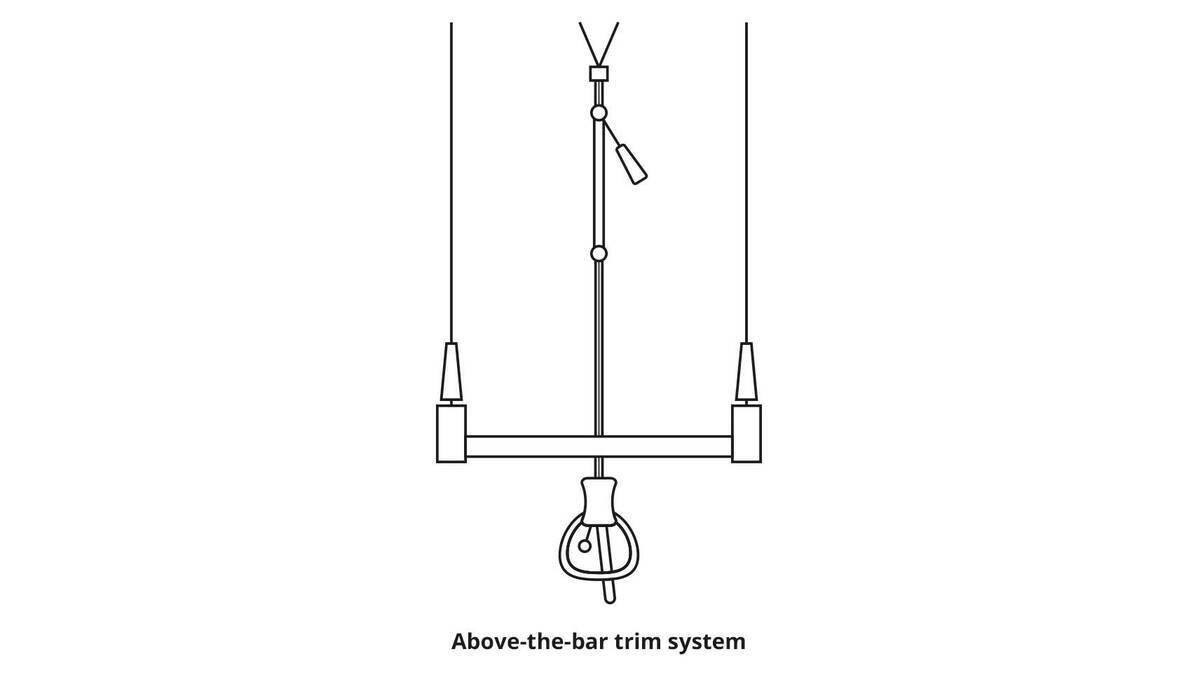Buying kitesurfing gear

The kiteboard and the kite are the most pivotal equipment for kitesurfing. Below, you will find valuable insights to consider when selecting either.
1. The Kite
Kites differ in design, dimension, and build. The primary varieties include Bow kites, Delta kites, C-kites, and Hybrid kites. Each type boasts unique traits, thus being ideal for different scenarios. It's crucial to investigate the wind conditions of the area you plan to kitesurf, as wind strength plays a significant role in kite selection. Larger kites suit lower wind strengths, while smaller kites fit stronger winds.

In the table below, two key terms require explanation and understanding, as they define one of the fundamental distinctions among these kites.
The bridle, a configuration of lines affixed to the front (or leading) edge of your kite, varies in set-up based on the kite. Resembling a spider’s web at the kite’s leading edge, it gathers into a single line where you attach the lines from the bar. Essentially, the bridle system enhances your control over the kite, notably regarding power adjustment. For instance, C-kites without a bridle feature more sudden power gains, enabling advanced manoeuvres, yet demanding high skill proficiency.
The bridle system offers a greater degree of depower compared to the C-kite design. Depowering implies flattening your kite, resulting in less exposure to the wind and reducing its pull.

2. Bar and Lines
A bar and lines are obligatory for kite control. Wearing a kite harness, you attach it to the chicken loop on the bar, eventually linking to the lines. Once everything is in place, you have command over the bar, lines (your ‘steering wheel’), and the kite.
The bar and lines enable turning the kite, adjusting speed, or changing direction. There are numerous bar and line set-up options, but a prevalent arrangement is the 4-line bar. In this configuration, the central two lines connect to the leading edge through the depower mechanism, while the other two, linked to each bar's end, connect to the wingtips, facilitating steering and enabling depowering or powering. These lines are usually colour-coded and knotted to match the bar’s tip lines for correct and easy connections.

Examining the bar closely, you will notice numerous configurations, depending on the producer. The main differentiation is between the ‘above-the-bar trim system’ and the ‘below-the-bar trim system’. The former offers greater movement freedom, though accessing the depower might be more challenging. Conversely, the latter provides easier depower access, but might present a challenge in reachability.

It is vital to emphasise the need to choose the correct line length for your specific kite model when changing lines, as incorrect lengths could impair your accustomed kite control.
3. The Kiteboard
The kiteboard is another kitesurfing essential. Similar to other board sports, several key aspects are associated with kiteboards:
- The shape: Boards can be twin tip (symmetrical front and back) or directional (surfboard style). Shapes can be either square or rounded. Square shapes excel in edging, upwind, and jumping, while rounded shapes favour carving and ensure softer landings.
- The rocker: This refers to the curve from tip to tail. More rocker means better jump performance, whereas flatter boards improve edging.
- The concave: Concave (curvature between side edges) enhances ride smoothness and softens landings.
- The fins: Rides can be with or without fins. Larger fins offer more stability in rough waters, ease edging, and enhance upwind abilities, while smaller fins facilitate smoother water glide.
- The size: Diverse brands provide varied size suggestions. Typically, board size correlates with your weight and expertise level. It should adequately support your weight and provide buoyancy powered by the kite. For novices, opting for a slightly larger board boosts buoyancy, while advanced users can transition to shorter boards as skills develop.
4. Are You a Novice?
If you're new to kitesurfing, ensure you:
- Choose an appropriate kite with effective depower capabilities
- Acquire protective gear (helmet, safety knife, possibly an impact vest)
- Enroll in a kitesurfing introductory course (Having directed sessions is beneficial)
- Find a kite companion, as kitesurfing is safer and more enjoyable with a partner
